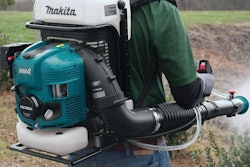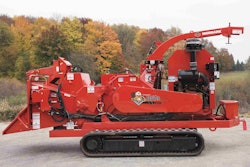 When winter weather makes food sources scares, deer can’t afford to be picky.
When winter weather makes food sources scares, deer can’t afford to be picky.Photo: Heather/Flickr
Depending on where your clients live, browsing deer can be a major problem. As winter weather sets in, heavy snow can motivate deer to be willing to eat almost anything.
If your client is complaining about how their landscape has turned into a buffet for visiting deer, there are several different methods for deterring these hungry visitors. Each option comes with its own pros and cons and vary in their effectiveness.
Plant alternatives
Deer eat over 500 kinds of plants and prefer to nibble on a variety, devouring around 7 pounds per day. Because they lack upper incisors, browsed plants have a rough shredded surface, unlike when rabbits and rodents who leave sharp, clean cuts.
No plant is deer-proof, but they do tend to avoid certain plants, but this can vary by areas. The type of plants deer tend to ignore have a strong scent, thick or leathery leaves, or fuzzy or bristly textures.
Yarrow, purple coneflower, daffodils, and Russian sage are examples of perennials that are rarely browsed. For a more comprehensive list, check out resources from local university extensions, such as the University of Minnesota, for what has been shown to work best.
Do not mix the unappealing plants with the ones deer love. This will only cause them to flatten the disliked ones on their way to their next tasty treat.
Repellents
Repellents are effective in low to moderate deer pressure as it disrupts and reduces the feeding rather than eliminate it. There are two types of repellents – contact repellents and area repellents.
Contact repellents are applied to the plants, which makes them taste bad to the deer. They must be applied on a dry day when temperatures are above freezing. Plants should be sprayed to a height of six feet.
Area repellents are placed in problem areas and discourage deer by the scent. Both contact and area repellents must be reapplied often as rain can cause the scent/taste to wear off.
It is best to apply repellents before a season anticipated deer browsing. If a feeding pattern has already been established, it is harder to discourage the deer even by taste.
There are many commercial repellents that range in their longevity and deterrence. Home remedies have questionable success and include hanging bags of hair from the branches of trees.
Fencing
The most effective and sometimes the most expensive option for keeping deer out of the backyard is fencing.
If it’s just a small edible garden patch that the homeowner wants to protect, suggest installing a four-foot high fence as deer avoid small, closed-in spots.
When it comes to guarding the whole landscape, an effective deer fence should be a minimum of eight feet high. If the fence is solid, a six-foot fence can work because deer are reluctant to leap when they can’t see the other side.
For deer grazing which is only a problem during the winter, black plastic mesh works as a good, non-permanent fencing material when supported properly with metal or wooden stakes.
Permanent fencing should use high-quality materials to ensure the effectiveness and lifespan of the fence. Wood, wire, and chain link are all acceptable options. If your customer would rather not have such a tall fence on their property, you can suggest the double-row fence option. These two fences are four to five feet high and four to five feet apart.
Aesthetics don’t have to be sacrificed when building a fence. Check out this article on how to make deer fences beautiful.










